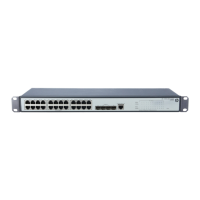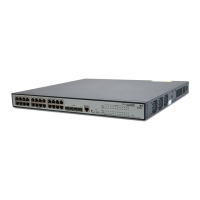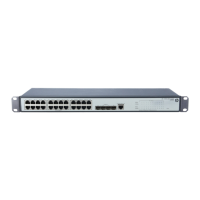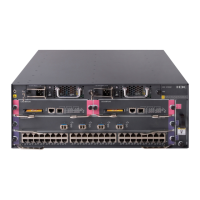Power Priority
Set the power supply priority for a PoE port. The priority levels of a PoE port
include low, high, and critical in ascending order.
When the PoE power is insufficient, power is first supplied to PoE ports
with a higher priority level.
When the PSE power is overloaded, the PoE port with a lower priority is
first disconnected to guarantee the power supply to the PD with a higher
priority.
If you set the priority of a PoE port to critical, the system compares the
guaranteed remaining PSE power (the maximum PSE power minus the
maximum power allocated to the existing critical PoE port, regardless of
whether PoE is enabled for the PoE port) with the maximum power of
this PoE port. If the former is greater than the latter, you can succeed in
setting the priority to critical, and this PoE port will preempt the power of
other PoE ports with a lower priority level; otherwise, you will fail to set
the PoE port to critical. In the former case, the PoE ports whose power is
preempted will be powered off, but their configurations will remain
unchanged. When you change the priority of a PoE port from critical to
a lower level, the PDs connecting to other PoE ports will have an
opportunity of being powered.
By default, the power priority of a PoE port is low.
IMPORTANT:
19 watts guard band is reserved for each PoE port on the device to
prevent a PD from being powered off because of a sudden increase of
the PD power. When the remaining power of the PSE is lower than 19
watts, the port with a higher priority can preempt the power of the port
with a lower priority to ensure the normal working of the higher priority
port.
If the sudden increase of the PD power results in PSE power overload,
power supply to the PD on the PoE interface with a lower priority is
stopped to ensure the power supply to the PD with a higher priority.
Configuring non-standard PD detection
PDs include standard PDs and nonstandard PDs. Standard PDs are those conforming to the IEEE 802.3af
standard. Usually, the PSE can detect only standard PDs and supply power to them. The PSE can detect
nonstandard PDs and supply power to them only after the PSE is enabled to detect nonstandard PDs.
Select PoE > PoE from the navigation tree and click the PSE Setup tab to enter the page shown in Figure
425. The page displays the location of all PSEs, and the status of the non-standard PD detection function.
Figure 425 PSE setup
To enable the non-standard PD detection function of a PSE, find the PSE ID, select Enable in the
corresponding Non-Standard PD Compatibility column, and then click Apply.
To disable the non-standard PD detection function of a PSE, find the PSE ID, select Disable in the
corresponding Non-Standard PD Compatibility column, and then click Apply.
To enable the non-standard PD detection for all PSEs, click Enable All.
To disable the non-standard PD detection for all PSEs, click Disable All.

